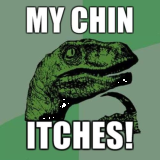| Lecter | Date: Saturday, 2013-01-26, 16:03 | Message # 1 |

Group: NCO
Messages: 534
Awards: 0
Status: Offline
| TACTICAL MOVEMENT
Moving together with team increases your chances of survival. However, there are PRINCIPALS, which apply not only to TEAM, but also INDIVIDUAL movement:
Sprint through open areas. For obvious reasons, you dont want to stay in open area for too long.
</u>
<u>Relocate ASAP, if you were compromised and you cant cover all dangerous approaches. If you are compromised in area, with a lot of uncovered danger zones, try to move away to safer spot, because if tangos find your position, they will try to flank you.
</u>
<u>If you dont need to move fast, enter walking mode. There are 3 moving speeds: walking, runing and sprinting.When in running stage, you can maneuver well and shoot, but not very accurate.
When you sprint, you cannot shoot, plus your maneuvering to sides is quite clumsy. Walking stage is optimal, when you have to move on alert. Walking provides quite accurate aim and you can maneuver quite well to the sides. (Walking can be achieved simply by aiming down your sights and moving, or toggling the walk button).
</u>
<u>Keep a safe distance from your teammates, but dont go too far from them. Tangos like to throw flashbangs, incindiaries and potatoes (frags) at you from time to time, so you wouldnt want to stay too close next to each other, if potato lands nearby. But you should stay close enough to be able to assist your comrade if he is pinned down, flashed or in some other way annoyed by enemies.
Always try to observe your surroundings. Its beneficial, if you take notice of whats around you. Covers, safe areas (those, with least danger zones) might be useful, if you need to retreat
or relocate.
</u>
<u>
TEAM-COORDINATED
MOVEMENTS & TECHNIQUES
General concept
Moving as element in vegas is pretty much like in swat4 or ravenshield. Its safer if everyone is moving together and covering different sectors. Rearguards and flank guards are especially important here, as enemy may come from anywhere or from everywhere at the same time. But moving in big formations here is not easy. Optimal sub-team size should be 2 or 3 members, as it is balanced best with mobility and sector covering. With 3 men: 1-Pointman, 2- Coverman (flank guard),
3-Rearguard. 2-men team: 1-pointman, 2-Coverman (flanks and rear). Every sub team, if possible, should have someone covering rear, since its hard for single person to cover 3 sides (flanks,rear).
Cover-move
Its a squad maneuver, when members move one by one (or x by x). During this movement, 1st part of squad covers danger zone, while 2nd relocates to decent position, where they can provide cover for 1st. As they do so, then 1st relocates to next cover etc. This maneuver requires precise communication in squad. You wouldnt want to move, if you wouldnt be sure, that your teammates are covering proper sectors. So do not attempt to move, if you havent heard ,,COVERING!‘‘.
When you start to move, notify your team by saying ,,MOVING!‘‘.After you moved
and got in position, where you are covering your teammates, report ,,COVERING!‘‘
L-shape
This is a covering position. When pointman is firing out of cover(pointman croutches), coverman should stand close to
him and cover pointman‘s sides, which he cant cover himself. Coverman is standing as close as possible to the pointman, while covering his side (and more angle, if needed and possible), hence L-shape.
Scout
A way to see whats around corner, without alerting possible tangos around it. Squad leader may order to scout a specific location. During this action, 1 or 2 members of the squad
(1-who is actually doing the scouting, 2- is for covering 1st) moves to a corner to check whats behind it, without exposing. Its different, than scan. Scout should equip his pistol, as it is least visible from around corners, due to short barrel. He should not pop-out from cover, or look to sides too much, so not to expose the weapon. Since scout has his pistol equipped, he should be
backed up by someone. Just in case. Scanning may be performed in swat4 manner, when there is a very limited vision around the corner.
Decoy
Decoy is an action, where tangos are deliberately distracted by sound (gunshot, explosion), so that they would come to investigate. This allows to create ambushes.
Dig-in (passive/aggressive)
Dig-in is a tactic, where team gets into position, to cover all threat sectors and holds position.
Passive - when members get in cover and do not pop out of it (useful when setting up ambushes, as then enemies wont spot you that quickly)
Aggressive - Members are holding position poped
out from cover, waiting for contacts and engaging them on sight.
Retreat (fast/slow)
Maneuver, which involves relocating to safer position.
Fast - basically, running away ASAP to the retreatpoint. It would be best, to use flashbangs to temproarily impairenemies vision.
Slow -methodical retreat, involving cover-move discipline, smoke grenades are usefulon slow retreats, as their effect is longer (though slower).
Retreat point - an area set by the element or sub-team leader.
I did not intend to cover all possible tactical aspects. Its quite impossible to do it alone. I will wait for us to gain more vegas2 gaming experience to make further tactics development. Plus, I will be waiting feedbacks from you all. Luis, I would be glad, if you could write something like this as well, and ,perhaps, mention things, that I missed.
MOVEMENT SPEEDS:
On alert - walk slow and cautious.
Dynamic - running mode.
Double time - sprinting.
May the forces of evil become confused on the way to your house
,,Not a single chainsaw was given that day...''
Message edited by Drago - Monday, 2013-02-11, 07:27 |
| |
| |
| Raptor | Date: Saturday, 2013-01-26, 22:59 | Message # 2 |

Group: Commander
Messages: 3115
Awards: 0
Status: Offline
| Good stuff and well written mate.
But as already mentioned some of the stuff is not specific for Vegas2 and belongs therefore in the general theory or SOP category. I have written some comments in google drive 
"Teamwork is essential, it gives them someone else to shoot at."
Murphy's Laws of Combat #9
|
| |
| |
| Lecter | Date: Sunday, 2013-01-27, 10:52 | Message # 3 |

Group: NCO
Messages: 534
Awards: 0
Status: Offline
| Quote (Raptor) some of the stuff is not specific for Vegas2 and belongs therefore in the general theory or SOP category
May the forces of evil become confused on the way to your house
,,Not a single chainsaw was given that day...''
|
| |
| |
| Raptor | Date: Sunday, 2013-01-27, 12:08 | Message # 4 |

Group: Commander
Messages: 3115
Awards: 0
Status: Offline
| Quote (Drago) I think its worth to, at least, reference those tactics from SOPs.
Simply imagine we change or add a detail to a certain tactic. If the tactic is described in 4 basic manuals, we would have to make the change 4 times. On the other hand if the basic manuals just contain a reference to our central docs, one quick change and we are done 
"Teamwork is essential, it gives them someone else to shoot at."
Murphy's Laws of Combat #9
|
| |
| |
| ShadowManu | Date: Sunday, 2013-01-27, 16:50 | Message # 5 |

Group: NCO
Messages: 791
Awards: 0
Status: Offline
| Thinking with functions/procedures/objects, don't you Raptor?

|
| |
| |
| Raptor | Date: Sunday, 2013-01-27, 18:52 | Message # 6 |

Group: Commander
Messages: 3115
Awards: 0
Status: Offline
| Yep, and it works whenever one has to store and manipulate information 
"Teamwork is essential, it gives them someone else to shoot at."
Murphy's Laws of Combat #9
|
| |
| |